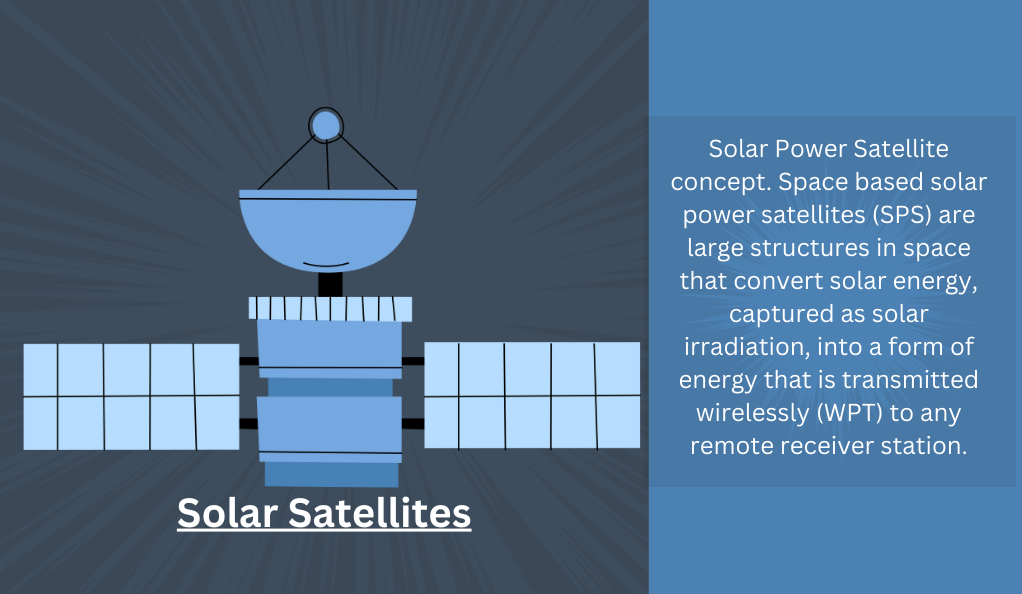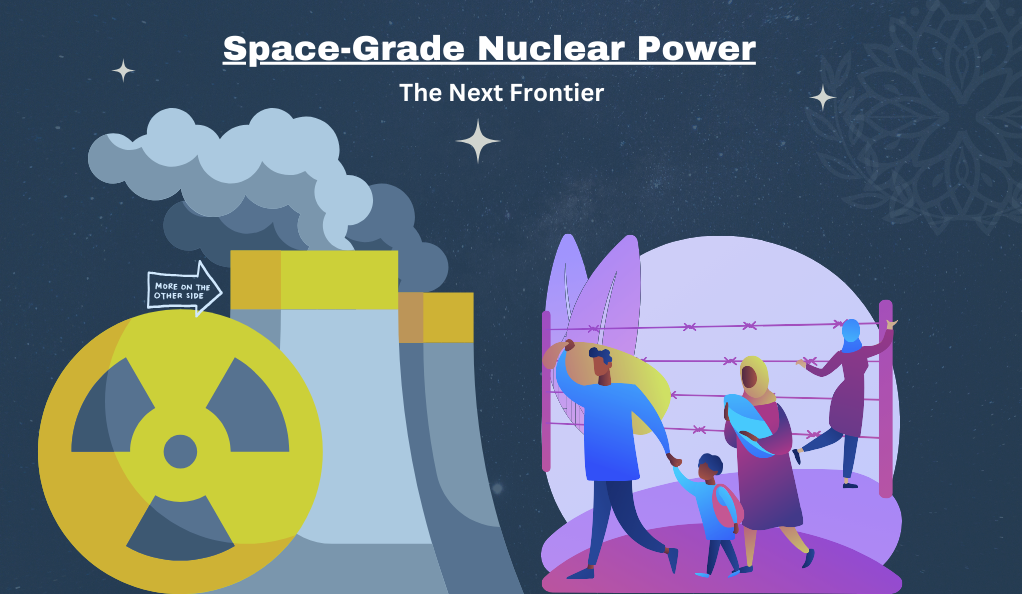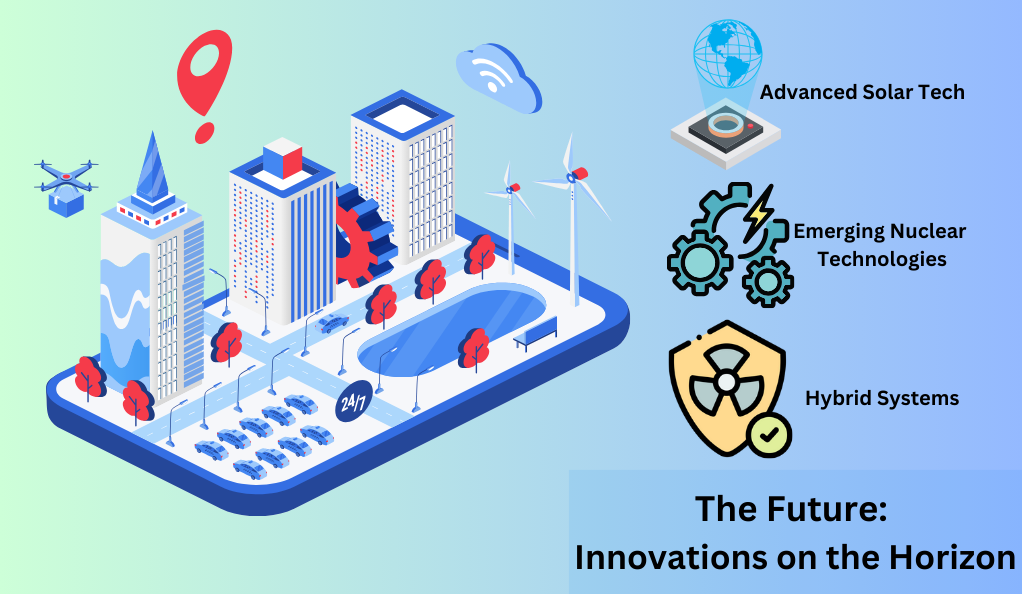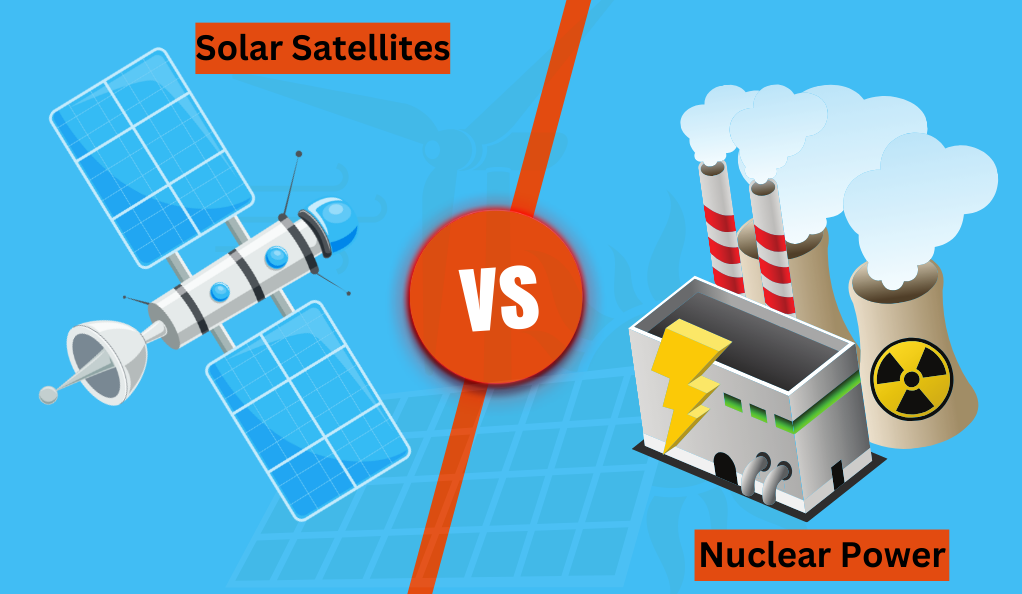Space, often referred to as the final frontier, presents not just challenges in terms of distance and hostile environments, but also in terms of the energy required to explore, inhabit, and utilize it. As our ambition grows, from visiting neighboring planets to establishing colonies and mining asteroids, so does our need for reliable and powerful energy sources. Traditional systems based on fossil fuels are clearly impractical for space missions. Hence, renewable energy options become a critical focus. Two of the most promising contenders in this field are solar satellites and space-grade nuclear power. Both have their unique advantages and challenges, setting the stage for an exciting comparative exploration.
The Increasing Energy Needs in Space:
The energy demands of space missions are unlike any other. Take, for instance, the International Space Station (ISS). Orbiting the Earth approximately once every 90 minutes, it experiences 45 minutes of daylight followed by 45 minutes of darkness. This rapid day-night cycle requires robust energy storage and retrieval systems. Moreover, future missions – like a potential Mars colony – would demand even more power, not only for the journey but also for the sustained habitation and research activities on the planet.
Solar Satellites and Nuclear Power: An Overview
At first glance, space seems like an ideal place for solar energy. With no atmospheric interference, solar panels in space can capture sunlight much more efficiently than those on Earth. This is where solar satellites come into play, acting as vast energy farms orbiting in space.
On the other hand, nuclear power, with its ability to provide consistent energy regardless of location or time, offers promise especially for missions far from the Sun. Unlike solar energy, which diminishes as one travels further from the Sun, nuclear power remains consistent, making it a potentially reliable energy source for deeper space missions.
Solar Satellites: Harnessing the Sun’s Power
Space offers a unique environment where the limitations of Earth’s atmosphere no longer hinder solar energy’s potential. Solar satellites seek to exploit this advantage, acting as colossal energy collectors in the void of space.

What Are Solar Satellites?
Solar satellites, often termed as Solar Power Satellites (SPS), are designed to convert sunlight into electricity in space and then transmit it to where it is needed. This could be a spacecraft, a space habitat, or potentially even back to Earth. Equipped with vast arrays of solar panels, they hover in strategic points in space, capturing sunlight without the interference of weather, atmosphere, or the day-night cycle.
| Aspect | Benefits | Challenges |
|---|---|---|
| Continuous Energy Harvest | – Solar satellites can harvest sunlight continuously.<br>- Potentially higher energy yields. | |
| Scalability | – Modular nature allows for vast satellite arrays.<br>- Suitable for powering large spacecraft or space habitats. | |
| Distance from the Sun | – Efficiency of solar energy capture diminishes as spacecraft move further from the Sun. | |
| Energy Storage and Transmission | – Efficient storage and transmission of energy, especially over vast distances, is challenging. |
Space-Grade Nuclear Power: The Next Frontier
Nuclear power isn’t new to space exploration. Even now, various space probes and rovers, especially those destined for the farther regions of our solar system, utilize nuclear power sources due to their long-lasting nature.

Introduction to Space Nuclear Power:
Space missions have employed Radioisotope Thermoelectric Generators (RTGs) for decades. These devices generate electricity from the heat produced by the natural decay of radioactive isotopes, such as plutonium-238. Future technologies under consideration include actual fission reactors that could power more energy-intensive missions.
Benefits:
- Long-Duration Energy Supply: One of the standout advantages of nuclear power is its longevity. A nuclear source can provide consistent energy for decades, which is particularly beneficial for long-duration space missions.
- Deep Space Capability: Nuclear power doesn’t rely on sunlight, making it an ideal energy source for missions that venture far from the Sun, where solar energy becomes impractical.
Challenges:
- Safety Concerns: Any malfunction or accident involving nuclear materials can have severe consequences, necessitating rigorous safety protocols and backup systems.
- Regulatory and Political Hurdles: Deploying nuclear power in space often requires navigating a maze of international regulations and treaties, potentially slowing down the adoption of this technology.
Safety Protocols and Concerns
Venturing into the vastness of space is inherently risky. Adding energy systems, especially ones as powerful as solar satellites and nuclear reactors, amplifies the complexity and the potential for unforeseen challenges.
Potential Risks:
Solar Satellites: These involve massive arrays of solar panels, which, if damaged by micrometeoroids or space debris, could malfunction or stop working altogether. Moreover, the transmission of energy, especially if beamed back to Earth, needs pinpoint accuracy to avoid misdirected energy beams.
Nuclear Power: The main concern with nuclear reactors is a malfunction that might lead to a release of radioactive materials. Such a release in space could contaminate spacecraft or habitats, and if close to Earth, there’s a potential threat to our planet itself.
Mitigation Measures:
Robust Design: Both solar satellites and nuclear reactors are designed to withstand the rigors of space. This includes resilience against space debris and the vast temperature differences.
Backup Systems: Redundancy is crucial. Multiple backup systems ensure that if one part fails, the mission can still proceed without a total loss of power.
Remote Monitoring and Control: Advanced telemetry allows for real-time monitoring of these energy systems from Earth, permitting timely interventions if something goes awry.
Environmental and Ethical Considerations
Space exploration doesn’t just concern astronauts and scientists; it’s a shared endeavor that impacts humanity as a whole. Consequently, the methods we employ, especially in energy generation, come under scrutiny.
Environmental Impact on Earth
Both solar satellites and nuclear power for space applications have environmental considerations. Solar panel production and satellite launches have an Earthly footprint due to raw material mining and rocket emissions. On the other hand, space-grade nuclear fuel production and waste management raise concerns about their potential impacts on terrestrial ecosystems. Balancing environmental concerns while harnessing the benefits of these technologies is crucial for sustainable space exploration.
Ethical Debates
Space debris accumulation is a growing concern as we deploy extensive energy systems like solar satellites, posing risks to other satellites and the ISS. Simultaneously, the use of nuclear materials in space is a perennial ethical debate, with detractors citing potential risks and proponents emphasizing their necessity for deep space exploration. Balancing these concerns is essential for responsible and sustainable space endeavors.
The Future: Innovations on the Horizon
With the pace of technological advancement, the future of space energy is far from static. New technologies and systems are constantly being developed, promising safer, more efficient energy solutions.

Advanced Solar Tech
Innovations in solar panel efficiency and energy transmission methods could see future solar satellites capturing and sending more energy than ever before.
Emerging Nuclear Technologies
Fusion, often touted as the ‘holy grail’ of energy, could find its application in space. A fusion reactor, if realized, promises abundant energy with fewer radioactive concerns than traditional fission reactors.
Hybrid Systems
Instead of a binary choice between solar and nuclear, future missions might employ hybrid systems. These could utilize solar energy when near the Sun and switch to nuclear power for deep space segments, offering the best of both worlds.
Conclusion
Energy is the cornerstone of our journey into the vastness of space, from satellite missions to interstellar travel. Solar satellites and space-grade nuclear power represent cutting-edge solutions tailored to space’s unique challenges. Rather than pitting them against each other, the future may see them as complementary, with solar thriving closer to the Sun and nuclear providing endurance for deep space missions.
However, realizing the potential of these energy sources requires ongoing research, collaboration, and the development of global regulatory frameworks. Space is a shared frontier, and addressing its challenges necessitates international cooperation, resource pooling, and a commitment to safety and ethics in our cosmic endeavors.

